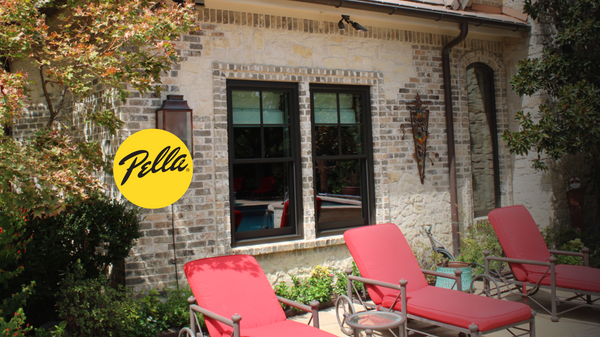Patio Doors that Brighten and Open Your Living Space

Patio Doors For Sale in Dallas-Fort Worth
A patio door is a unique feature in any home, as it not only serves as an entrance or exit to an outdoor space but also adds aesthetic appeal and functionality. At Pella of DFW, we have an entire guide about outdoor patio doors.
If you are looking for a patio door replacement, or planning to install a patio door as part of a new home design, we’ve got the right options for you. We also offer a large variety of different exterior doors in addition to our selection of patio doors.
Top Reasons to Install a Patio Door in Your Home
Here at Pella Windows & Doors of Dallas-Fort Worth, we know that a high-quality patio door can truly transform a patio or backyard space. Here are just a few of the reasons to consider installing a new or replacement patio door.
1. Seamless Transition into the Patio:
One key aspect that distinguishes patio doors is their ability to create a seamless connection between indoor and outdoor spaces. Patio doors feature large glass panels and floor-to-ceiling designs, allowing for a seamless connection between the interior and exterior of a house. This feature enables convenient access to outdoor spaces, making them ideal for entertainment or simply enjoying the scenery. If you have any more questions about Patio Doors, please Contact Pella of DFW today!
2. Natural Light:
Patio doors are created to optimize the intake of natural light. The large glass panels allow sunlight to enter the interior space, creating a bright and spacious atmosphere. This not only improves the overall appearance of the room but also saves energy by reducing the need for artificial lighting during the day.
3. Versatility:
Patio doors are available in various styles and designs, allowing homeowners to select the one that suits their preferences and complements their home’s overall design. There are several popular options for patio doors, including sliding patio doors, French patio doors, and folding patio doors. This versatility ensures that there is a patio door option available for every type of home and design aesthetic.
4. Outdoor Views of Dallas:
Patio doors offer a clear view of the outdoor area, allowing homeowners to appreciate their surroundings from the comfort of their indoor space. Patio doors provide a visual connection with nature, bringing the outdoors in and enhancing the ambiance of the room, whether it’s a garden, backyard, or a beautiful view.
5. Energy Efficiency:
Patio doors are often designed with energy-efficiency in mind. The large glass panels are typically double or triple-glazed, which helps with insulation and decreases heat transfer between the interior and exterior. This can help maintain a comfortable indoor temperature, reduce energy consumption for heating and cooling, and potentially save costs on utility bills.
Get a Quote For Your New Patio Doors
If you are ready to replace your old patio doors, visit our showroom to explore different patio door styles, or schedule your installation service with our team.
